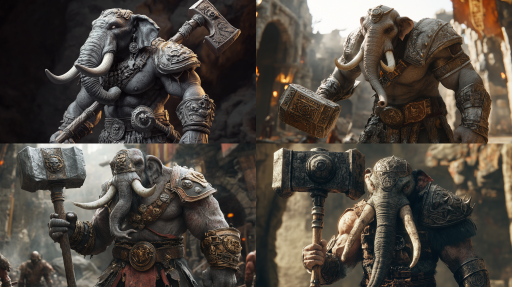Explore the Best AI Image Gallery

The Rise of AI Image Creation Tools: Transforming Art and Ethics
Artificial Intelligence (AI) has made substantial advances in various fields, and the realm of creative arts is no exception. With the advent of AI image creation tools, artists, designers, and marketers are experiencing a paradigm shift in how they conceptualize, design, and execute creative projects. These tools have revolutionized not only the way art is produced but also how it is perceived and critiqued in society.
Impact on the Creative Industry
AI image creation tools, such as DeepArt, DALL-E, and Midjourney, empower users to generate highly detailed images with minimal input. This democratization of creativity means that anyone, regardless of their artistic skill level, can produce visually stunning artwork. The implications for the creative industry are significant:
- Accessibility: Artists and non-artists alike can create professional-quality images, allowing for broader participation in the creative process.
- Collaboration: Many professionals now use these tools as collaborators, blending human creativity with machine efficiency to create extraordinary results.
- Cost-Effectiveness: Production time and costs are reduced, as AI can quickly generate numerous iterations of a design, enabling businesses to scale operations without sacrificing quality.
Potential Uses in Various Domains
The versatility of AI image generation stretches across numerous domains, including:
- Marketing and Advertising: Companies can generate custom images for campaigns tailored to their target demographics. By using AI tools, brands can rapidly test different visuals, optimizing their marketing strategies.
- Entertainment: The gaming and film industries have started incorporating AI-generated visuals in concept art, animation, and even full-fledged backgrounds for scenes, providing creative teams with a vast array of options to choose from.
- Fashion and Design: Fashion designers are leveraging AI's capabilities to foresee trends and create clothing designs that are both innovative and contemporary.
- Education: Educators can use AI-generated images to make learning materials more engaging and relevant, showcasing concepts through visualizations tailored to diverse learning styles.
Ethical Considerations
While the benefits of AI image creation tools are enormous, they also raise a multitude of ethical concerns:
- Copyright Issues: The question of ownership arises when machines generate images based on a mix of existing artwork. Who holds the copyright—the user, the AI developer, or the original artists whose work inspired the new creation?
- Misrepresentation: The ability to generate hyper-realistic images can lead to conversations about authenticity in media and fine art. AI-created images can easily be manipulated to mislead viewers.
- Job Displacement: The rise of AI tools has sparked fears of job displacement in creative fields. As machines take over certain tasks, traditional artists may find it challenging to compete.
Future Trends
Looking ahead, several trends are likely to shape the future of AI image creation:
- Improved Algorithms: As technology evolves, AI models will become more sophisticated, producing images that blend human creativity with an understanding of aesthetic principles and cultural contexts.
- Integration with Other AI Technologies: The future of creative endeavors may include the merging of AI image creation with text generation, sound synthesis, and more, leading to comprehensive multimedia experiences.
- Ethical Frameworks: As more artists and organizations leverage these tools, a call for established ethical guidelines will grow, encouraging responsible usage of AI in creative processes.
Conclusion
The emergence of AI image creation tools marks a transformative era in the creative industry. These technologies offer unparalleled opportunities while also forcing us to contemplate significant ethical challenges. Balancing innovation with responsibility will be crucial as we navigate this exciting frontier. As we continue to explore the potential and limitations of AI in art, it is imperative that we foster dialogues about ownership, authenticity, and impact on the future of creativity.